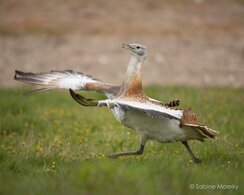 Photo: Sabine Maersky Photo: Sabine Maersky David Waters' talk about the Great Bustard Project was a wonderfully cheering way to spend a dark October evening. The last Great Bustards were shot in Wiltshire in the 1873 but over the last 30 years David's almost single-handed determination has brought the British population back to stability with over 100 birds now settled on Salisbury Plain. As David said in his talk, people travel thousands of miles to Antarctica, but right here on our doorstep are some of the most amazing and handsome birds on earth. 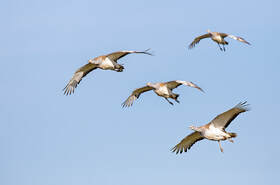 Bustards do fly – back in 2011 I relayed a report in I think Focus, that one had been seen over the Fonthill Lake and was thoroughly ridiculed for it. But although they are the heaviest of flying birds, they didn't think twice about heading off to Toulouse when they were doing their winter 'dispersal', which some of the hand-reared young did in the early days of the project. Because they have very long and strong legs, they don't need a 'runway' but pretty well do a 'vertical take-off'. Something that makes them welcome in our county is that they do virtually no damage to farmland or crops. Bustard chicks rely on Mother to be fed – for the first seven days, every hour - and how to keep them wild when they're being hand-reared is a challenge. They can be fed by a puppet with a Mother Bustard head but disguising the human who cleans out the pen is more of a problem – leading to the design of what bears an uncomfortable resemblance to what we now know as PPE. Once chicks hatch successfully, they stay with their mothers longer than usual, often till the following January. The collective noun for Bustards is a 'drove', and the first drove arrived in 2004. The survival rate for the first two years was 20%. But in 2007 the first eggs were found, with two females incubating a total of 8 eggs although none of them hatched. Almost certainly they were infertile because the females were too young, ie only 2-3 years old when they really need to be four or five years old to breed successfully. Because of problems evolving with the original source of eggs in Russia, research was undertaken to identify which of the other Bustard populations from right across Asia and southern Europe would be as or more suitable for the UK project. DNA samples were taken from the original British bustards, now stuffed (ie, taxidermied!) and in private house collections – there is of course one in the South Wiltshire Museum in Salisbury – and it was found that the Spanish population was nearly identical, where the largest population is north of Madrid in Castile-Leon. Eggs are taken very early in the season, so that the birds can lay a second clutch – which they often have to do as a result of natural predation. Finding a nest is incredibly difficult because the females lie so 'close' – they are virtually the same colour as the soil and almost flatten themselves into it. So finding them visually proved extremely difficult and in the end dogs were found to be most effective at sniffing them out. 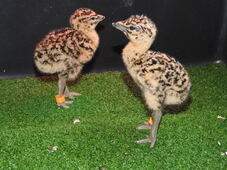 The first chicks to arrive of course had to be hand-reared, but it seemed this had the effect of making them disperse over quite long distances over the winter – one was traced as far as Toulouse in France, but sadly nothing was heard of that one again. Now the chicks are reared naturally by their mothers, this winter dispersal no longer happens. This year, because spring was extremely wet followed by the very dry weather, no nests were found in the usual nesting area – but then eight were found in nearby lucerne. Because this has to be cut for silage, the eggs had to be removed and incubated and the mothers did then lay a second clutch in their usual breeding area. 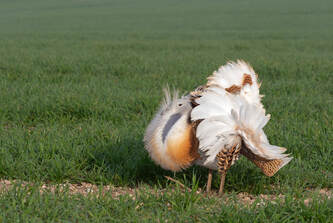 Handsome is as handsome does - a well-preened male bustard showing off to his rivals. Handsome is as handsome does - a well-preened male bustard showing off to his rivals. Bustards have some unique characteristics including that they have three forward-facing toes and they don't have a 'preening gland' - when preening for their mating-season 'displays' from late January onward, the males instead use 'powder down' which is UV sensitive so the plumage fades during the day. COVID has meant that the Great Bustard Project needs financial support more than ever, but this can be anything from just £10 to sponsor a chick and receive updates on its progress over the year, up to Life Membership at £600. Go to www.greatbustard.org for details. Comments are closed.
|
Photo: Avocets (Izzy Fry)
The headers display photos taken by our members. Do get in touch via the Contact Form if you'd like to submit a photo for selection.
Archives
May 2024
Categories
All
|
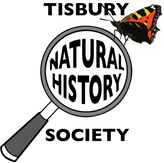
 RSS Feed
RSS Feed